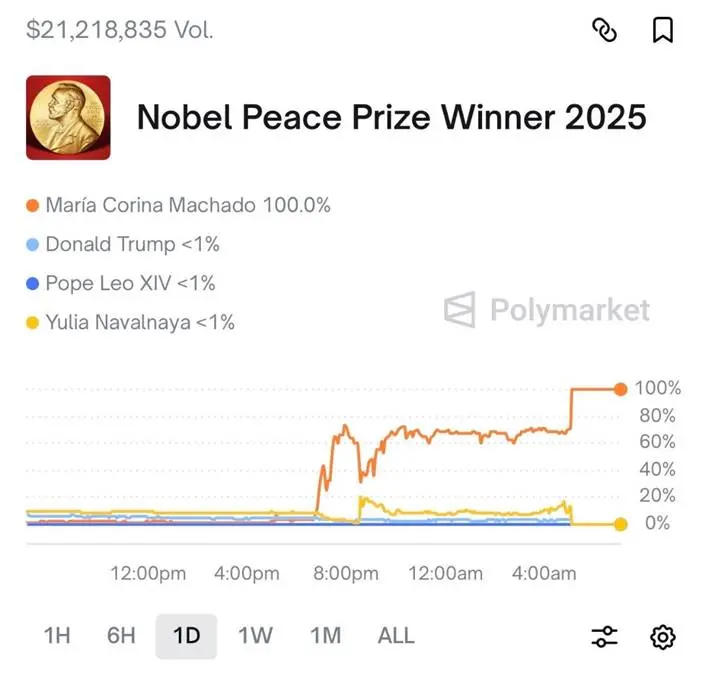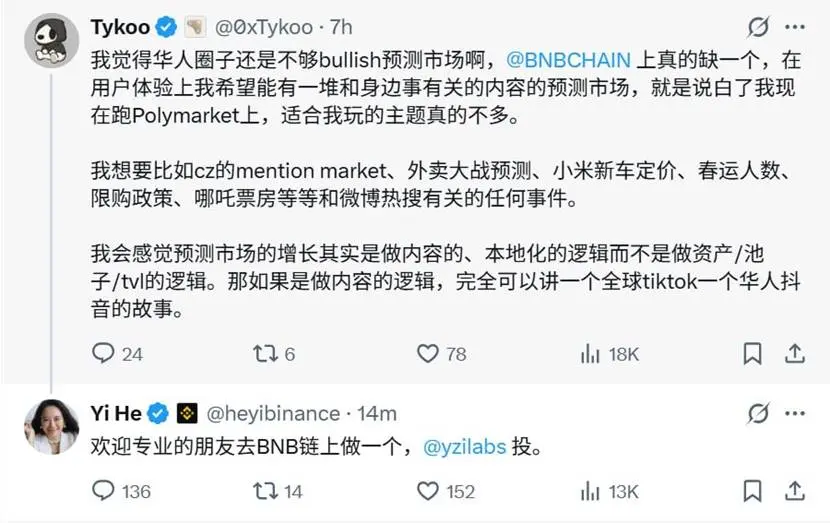Author: Zhou, ChainCatcher
The prediction market continues to thrive in 2025, with Kalshi and Polymarket achieving a combined trading volume of $1.44 billion in September, setting a historical record. Recently, both platforms announced the completion of a new round of financing: Polymarket raised $2 billion from its parent company, the New York Stock Exchange (ICE), with a valuation rising to $9 billion; Kalshi secured $300 million at a $5 billion valuation.
However, as the prediction market sector continues to flourish, three major questions have emerged on social media regarding this market: Will this market breed a large amount of insider trading? What is the regulatory attitude of major countries towards prediction markets? Why is there a general lack of Mandarin narrative-type prediction events? This article discusses these questions.
Insider Trading Harvesting Retail Investors?
The magic of prediction markets lies in the ability to profit from cognitive insights, but due to the nature of prediction events, certain types of prediction market trading can easily slip into insider trading, especially when information about award winners, economic data, etc., is publicly available among a small group before the event results are announced.
On October 10, 2025, the day the Nobel Peace Prize was announced, a globally watched "insider trading" controversy unfolded.
As early as July, a market for "2025 Nobel Peace Prize Winner" was opened on Polymarket, with a total trading volume exceeding $21.4 million. Popular candidates included Yulia Navalnaya, the widow of Russian opposition leader Alexei Navalny; former U.S. President Donald Trump (due to his controversial role in mediating the Hamas-Israel ceasefire); environmental activist Greta Thunberg; and WikiLeaks founder Julian Assange.
Maria Corina Machado had previously odds of only 3-5%, with almost no one betting on her. About 11 hours before the results were announced, Machado's odds suddenly skyrocketed from 3.6% to over 70%, with trading volume surging and total bets exceeding $210,000. Among them, at least three accounts placed large bets on Machado winning, ultimately profiting about $90,000.

This incident directly sparked a major debate about insider trading.
One side argues that allowing insider information trading can raise market accuracy to 92% because it accelerates information aggregation. Robin Hanson, an economist at George Mason University and one of the earliest advocates of prediction markets, has stated that allowing insiders to trade can improve the accuracy of odds; if the goal of prediction markets is to obtain accurate information, then you would certainly want to allow insider trading.
The other side emphasizes that this is a clear case of insider information leakage and fraudulent behavior, which undoubtedly undermines the willingness of ordinary investors to participate.
This also triggered discussions related to regulation. A Forbes employee stated that the model of prediction markets lies between futures exchanges and gambling websites, and regulators treat them more like the latter. The insider trading laws enforced by the U.S. Securities and Exchange Commission (SEC) do not apply to prediction markets, which are regulated by the Commodity Futures Trading Commission (CFTC). A 2025 report by KPMG warned that betting on event contracts using significant non-public information could severely distort market integrity and easily trigger a chain collapse in a regulatory vacuum.
In prediction markets, insiders, deeply knowledgeable experts in the field, and speculative retail investors all have vastly different amounts of information, and the asymmetry of information has already determined who the winners are.
What is the Regulatory Attitude of Major Countries/Regions Towards Prediction Markets?
The second major potential issue with prediction markets is their ambiguous legal positioning around the world. They possess characteristics of both gambling and financial derivatives, often falling into gray areas in different jurisdictions, or even facing direct restrictions, posing certain regulatory risks.
Currently, the United States is the most prominent country that explicitly mentions and regulates prediction markets. The U.S. Commodity Futures Trading Commission (CFTC) classifies them as event contracts, requiring platforms to register as designated contract markets and strictly comply with the Commodity Exchange Act. In February 2025, the CFTC held a roundtable to discuss the regulatory framework for sports and event contracts, aiming to find a balance between innovation and retail customer protection. In May 2025, the CFTC dropped its appeal against Kalshi's political contracts, confirming their legality but adding transparency disclosure and anti-manipulation requirements. Kalshi obtained compliance licenses across all 50 states under CFTC regulation, while Polymarket transformed into a regulated entity by acquiring the Florida-based derivatives exchange QCX, gradually expanding into the U.S. market.
The attitude in Europe is more cautious. The European Securities and Markets Authority (ESMA) mentioned prediction markets in the 2025 Markets in Financial Instruments Directive II (MiFID II) rules, requiring investment firms to optimize order execution policies. The Markets in Crypto-Assets Regulation (MiCA) further incorporates them into the licensing framework for crypto asset service providers, particularly emphasizing anti-money laundering compliance, showing a regulatory stance that is both open and cautious.
Crypto KOL @Phyrex_Ni pointed out that prediction markets are structurally very similar to binary options. Traditionally, binary options are a type of derivative contract where investors make judgments about a certain asset or event; if their prediction is correct, they receive predetermined returns, and if incorrect, they lose their investment. Prediction markets operate on a similar mechanism.
Most countries that have not explicitly regulated prediction markets tend to equate them with binary options, generally adopting a conservative attitude. For example, the UK's Financial Conduct Authority (FCA) directly prohibits retail trading of binary options; the EU's ESMA bans marketing related to binary options; and many Asian countries even directly view them as gambling, which is one reason why prediction markets have not yet "taken off" in the Mandarin-speaking region.
Overall, fragmented regulation exacerbates the risks of prediction markets, with most countries or regions focusing on anti-money laundering and consumer protection, either directly prohibiting such derivative contracts or imposing strict entry licenses.
Why is There a Lack of Mandarin Narrative Markets?
Overseas, Polymarket has transformed from a trading product into an informational social game, where users bet on events not just for profit but for a sense of participation, expression of rights and positions, and even to "bet on the future" with their positions.
Crypto KOL @MrRyanChi humorously remarked, "American college students have already started playing Kalshi and Polymarket, yet there are very few people in the Mandarin-speaking region discussing prediction markets."
Currently, the prediction market lacks a Mandarin narrative market, and aside from regulatory issues, crypto KOL @hoidya_ pointed out that the root cause is severe liquidity shortages.
The core reason for the lack of liquidity is that market makers and speculators find it difficult to calculate the profit from these bets. In traditional perpetual futures markets, retail investors' expected returns (EV) are often negative over the long term.
Market makers leverage their statistical advantages to obtain profits through hedging and funding rate arbitrage, thus forming a reliable source of liquidity. For Mandarin-type narratives, market makers dominated by Europe and the U.S. may lack sufficient statistical, resource advantages, and cultural backgrounds; they themselves cannot determine whether they can achieve positive expected returns in the long run. Once they cannot quantify the winning probability, they cannot allocate risk exposure, so they will not actively enter the market to inject liquidity.
KOL @Ru7Longcrypto pointed out that the Chinese community is still viewing prediction markets through the lens of DeFi, focusing on TVL pools and odds mechanisms, completely missing the point. She emphasized that the key to breaking through lies in creating content, not just building pools.
However, the regulatory environment in the Mandarin-speaking region is harsh, and public event topics are restricted, especially in mainland China, Hong Kong, and Singapore, where political and election-related topics are considered sensitive and subject to strict legal constraints. In contrast, events like the U.S. presidential election are legally recognized under the CFTC framework, providing a broader space for platform topics.
Therefore, another key point in promoting the mainstreaming of prediction markets in the Mandarin-speaking world is to build a localized topic library. For example, topics like the mention market by cz, predictions on the winner of food delivery battles, pricing of new Xiaomi cars, Spring Festival travel numbers, purchase restrictions, and box office predictions for the Nezha movie, etc., are not only more popular in the Mandarin-speaking region but also have clear announcement criteria, making them more likely to attract interest and participation from Mandarin-speaking investors.
As the heat in this sector rapidly rises, many users are focusing on BNB CHAIN, where there is a dense population of Mandarin-speaking users and a more mature Asian content ecosystem. He Yi has also publicly stated that he welcomes professional teams to launch prediction products on the BNB chain, and YZi Labs is willing to support this. Recently, several Mandarin-speaking-led prediction market projects based on BNB Chain have also significantly increased their marketing efforts on Twitter.

Conclusion
Overall, this wave of enthusiasm for prediction markets may not be a bubble, but the fire is burning too fast, and the market needs some calm voices and reflections. Although prediction markets have become mainstream, there are still controversies regarding compliance and insider trading, and the Mandarin-speaking region particularly lacks localized narratives, urgently needing to address liquidity issues and explore content more suitable for the Mandarin-speaking community.
For ordinary investors, prediction markets indeed represent a brand new way to play, with vast imaginative space and narrative appeal. For this reason, retail investors should focus more on content areas they are familiar with, rather than simply engaging in betting as a form of "gambling."
Click to learn about job openings at ChainCatcher
免责声明:本文章仅代表作者个人观点,不代表本平台的立场和观点。本文章仅供信息分享,不构成对任何人的任何投资建议。用户与作者之间的任何争议,与本平台无关。如网页中刊载的文章或图片涉及侵权,请提供相关的权利证明和身份证明发送邮件到support@aicoin.com,本平台相关工作人员将会进行核查。




